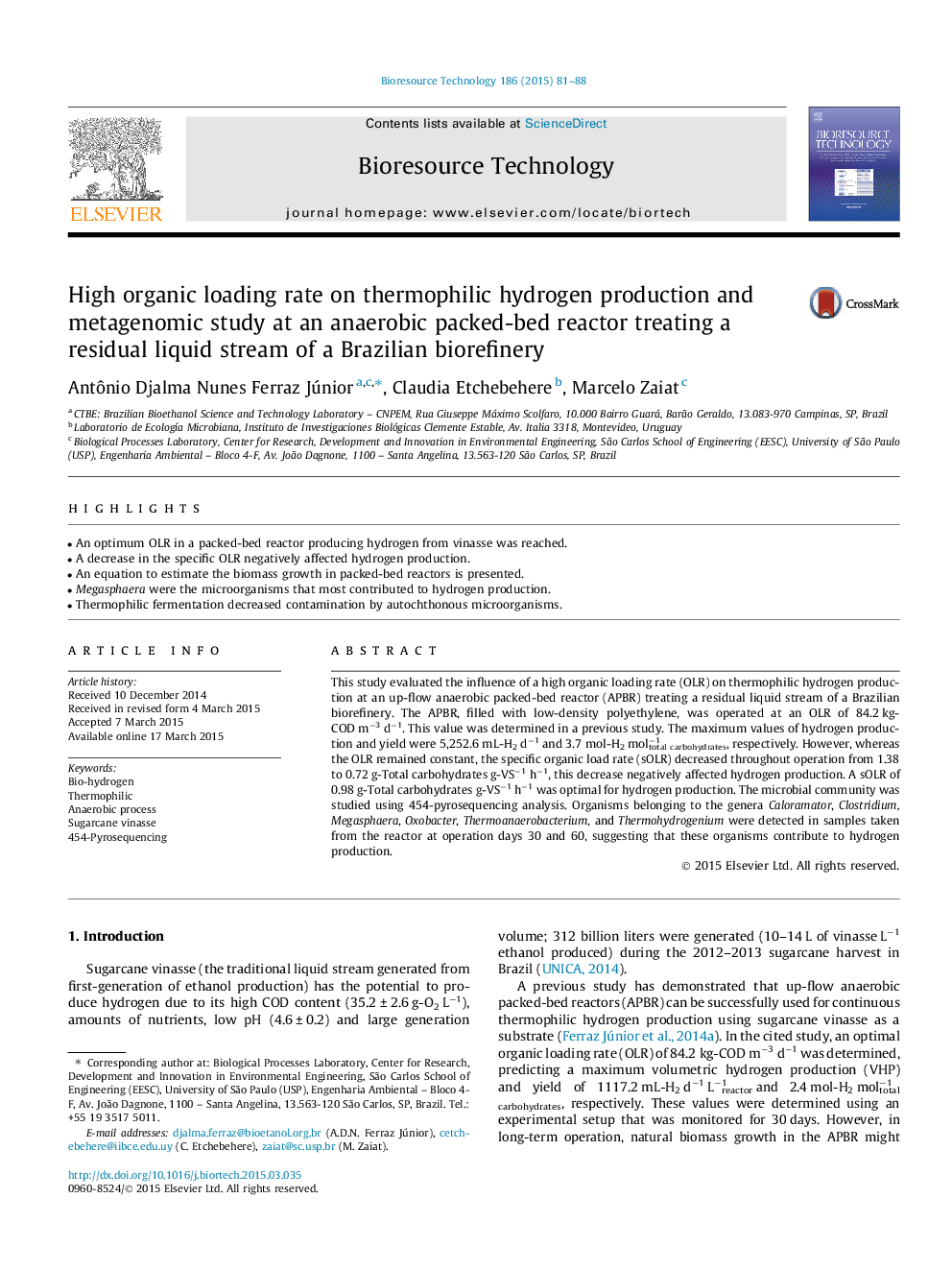| Article ID | Journal | Published Year | Pages | File Type |
|---|---|---|---|---|
| 7074942 | Bioresource Technology | 2015 | 8 Pages |
Abstract
This study evaluated the influence of a high organic loading rate (OLR) on thermophilic hydrogen production at an up-flow anaerobic packed-bed reactor (APBR) treating a residual liquid stream of a Brazilian biorefinery. The APBR, filled with low-density polyethylene, was operated at an OLR of 84.2 kg-COD mâ3 dâ1. This value was determined in a previous study. The maximum values of hydrogen production and yield were 5,252.6 mL-H2 dâ1 and 3.7 mol-H2 molâ1total carbohydrates, respectively. However, whereas the OLR remained constant, the specific organic load rate (sOLR) decreased throughout operation from 1.38 to 0.72 g-Total carbohydrates g-VSâ1 hâ1, this decrease negatively affected hydrogen production. A sOLR of 0.98 g-Total carbohydrates g-VSâ1 hâ1 was optimal for hydrogen production. The microbial community was studied using 454-pyrosequencing analysis. Organisms belonging to the genera Caloramator, Clostridium, Megasphaera, Oxobacter, Thermoanaerobacterium, and Thermohydrogenium were detected in samples taken from the reactor at operation days 30 and 60, suggesting that these organisms contribute to hydrogen production.
Related Topics
Physical Sciences and Engineering
Chemical Engineering
Process Chemistry and Technology
Authors
Antônio Djalma Nunes Ferraz Júnior, Claudia Etchebehere, Marcelo Zaiat,
